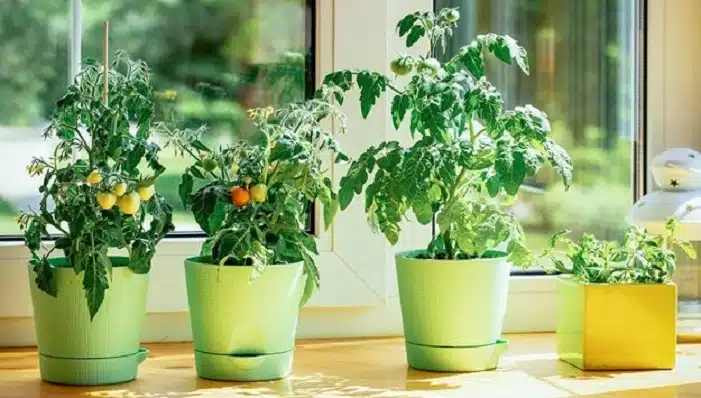Indoor gardening has gained tremendous popularity in recent years thanks to its numerous benefits, such as enhancing air quality, reducing stress, and adding a touch of nature to your living space. For beginners, indoor gardening with containers is an easy and practical way to grow plants, regardless of the size of your home. Whether in a small apartment or a spacious house, container gardening offers endless possibilities for cultivating everything from flowers to herbs and even small vegetables.
In this beginner’s guide, we’ll cover the essentials of getting started with indoor gardening using plant containers, from selecting the right containers to caring for your plants.
Choosing the Right Containers
The first step in indoor container gardening is choosing the right plant containers. The type of container you use will depend on the plant you want to grow. For instance, larger plants such as small trees or shrubs will require larger containers, while herbs and smaller plants will thrive in smaller pots. It’s important to ensure the containers have proper drainage to avoid waterlogging, which can lead to root rot.
When selecting containers, consider the material as well. Plastic pots are lightweight and affordable, but they may not provide the same aesthetic appeal as ceramic or terracotta containers. However, ceramic and terracotta pots tend to retain moisture better, making them suitable for plants that require consistent moisture levels. Look for “plant containers near me” in your local area to explore various options and choose containers that suit your plants’ needs and your home decor style.
Selecting Plants for Indoor Gardening
Indoor gardening is an exciting way to explore the world of plants, and there are many plant varieties suited for growing indoors. Start with easy-to-care-for plants, such as succulents, pothos, or snake plants. Beginners will love these low-maintenance plants because they require little care and still bring beauty and freshness to your house.
Herbs such as basil, mint, and thyme are also great options for container gardening indoors. They not only make your living space look vibrant but also provide fresh ingredients for cooking. Vegetables like lettuce, spinach, and radishes can also thrive indoors with the right amount of light and care.
It’s essential to consider the lighting conditions in your home when choosing plants. Some plants need bright, direct sunlight, while others prefer lower light levels. Be sure to match your plant’s needs with the natural light available in your home.
Watering and Fertilizing
Proper watering and fertilization are crucial for the success of your indoor garden. Indoor plants, especially those in containers, require more frequent watering than outdoor plants because the moisture in containers tends to evaporate more quickly. However, be careful not to overwater your plants, as this can lead to root rot. The most effective technique is to regularly check the moisture content by inserting your finger about an inch into the soil. It’s time to water if it feels dry.
Fertilizing your plants is also essential to keep them healthy and promote growth. Use a balanced, water-soluble fertilizer that is appropriate for indoor plants. Be sure to follow the instructions on the packaging, as over-fertilizing can harm the plants.
Providing Adequate Light
Light is one of the most important factors in successful indoor gardening. The majority of indoor plants need bright, indirect light, though the exact amount needed varies by plant type. If you don’t have access to sufficient natural light, consider investing in grow lights. Plants can flourish even in low light levels thanks to these lights, which are made to resemble the sun’s rays.
Place your plants near windows that receive the most light. If possible, position them where they can get morning sunlight, which is gentler than afternoon sunlight. To guarantee that every side of your plants receives the same amount of light, rotate them on a regular basis.
Maintaining and Caring for Your Indoor Garden
One of the joys of indoor gardening is that it’s easy to maintain. Keep an eye out for any indications of disease or pests on your plants. Common indoor plant pests include aphids, spider mites, and mealybugs. If you see any, remove the leaves with an insecticidal soap or gently wipe them off with a moist cloth.
Pruning is another important task in indoor gardening. To promote healthy growth and preserve the appearance of your plants, trim any dead or yellowing leaves.
Finally, don’t forget to repot your plants every couple of years to refresh the soil and provide them with more space to grow. This is also a good time to check the roots for any signs of disease or overcrowding.
Conclusion
Indoor gardening with containers is a rewarding hobby that can brighten your home, improve air quality, and even provide you with fresh herbs and vegetables. By selecting the right containers, choosing suitable plants, and maintaining the proper care routine, you can enjoy a flourishing indoor garden in no time. Whether you’re a beginner or an experienced gardener, the joy of nurturing plants indoors will bring nature’s beauty into your home.
If you’re ready to start, simply search for “plant containers near me” to explore local options and take the first step toward cultivating your indoor garden. Happy gardening!



